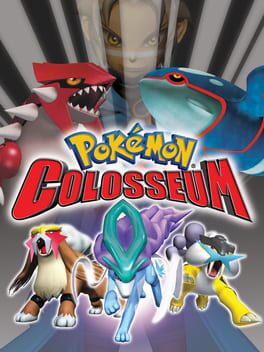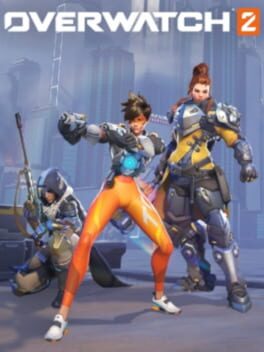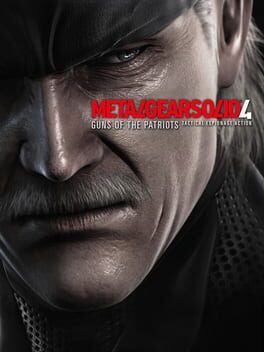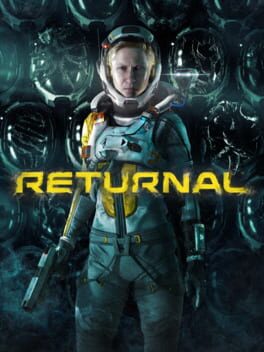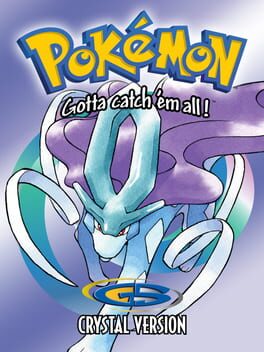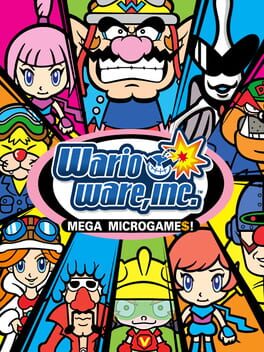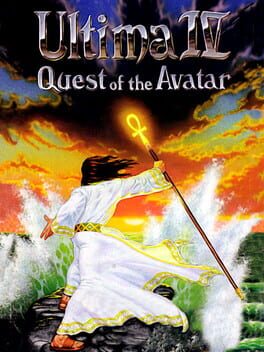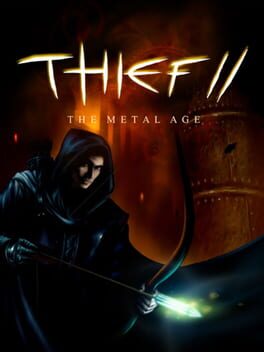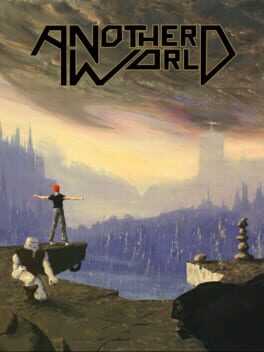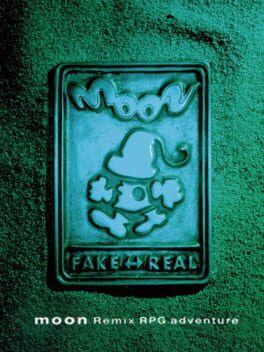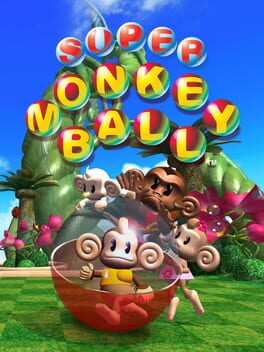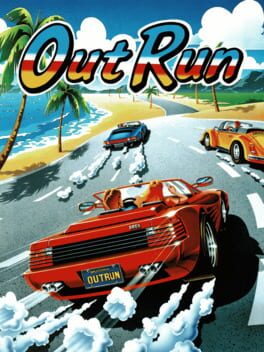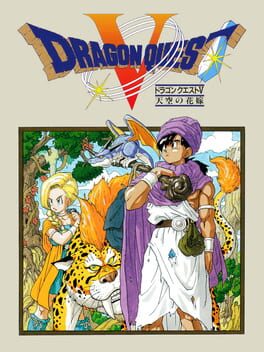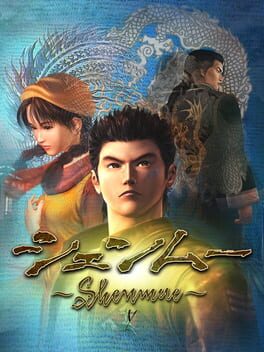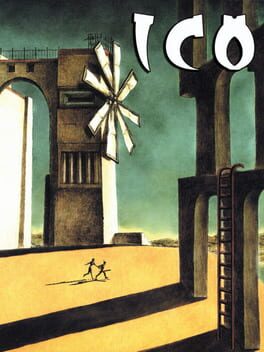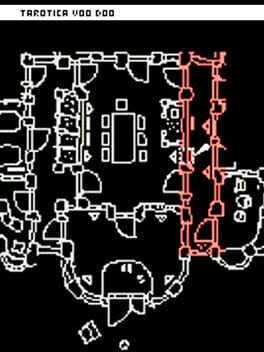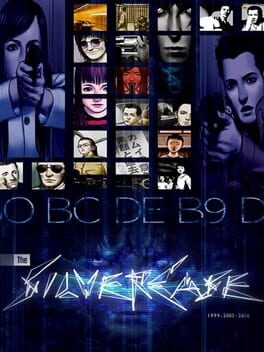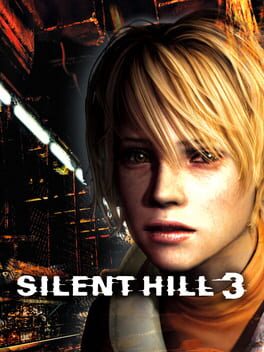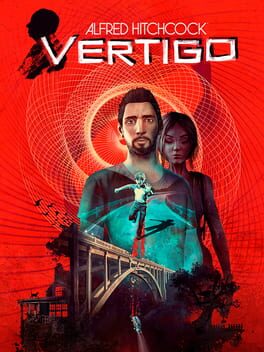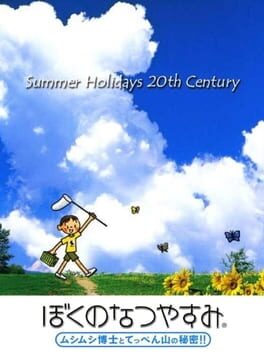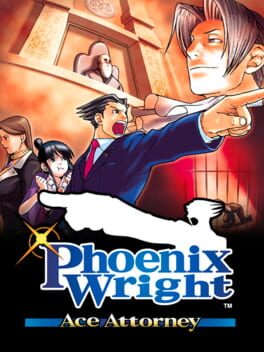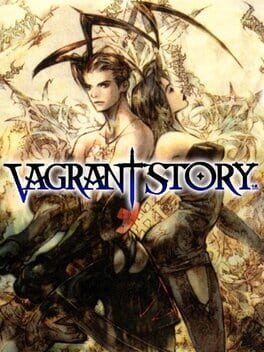sam_gray
21 reviews liked by sam_gray
Pokémon Colosseum
2003
part of me acknowledges that this got better retroactively because of the stagnation of the pokemon series, but it's also genuinely a really neat concept. you steal pokemon. you catch pokemon that you can't normally catch (starters, metagross, etc.). you play as someone who's given an explicit backstory and is implied to be morally ambiguous. most important, you have an extremely limited pool of pokemon to pick from. it's a similar idea as "art through adversity". you will look at pokemon like slugma and stantler differently than you would in any other game because they'll actually look usable. again, none of this is perfect by any means, but it was a really creative take on the pokemon formula that wasn't just trying to subvert tradition for the sake of advertising (i.e. "no gyms!!!!!" in pokemon sm). there was an original idea here, and regardless of how you think it's executed, you really can't deny that it's unlike any other pokemon game, for the better, i'd argue.
Overwatch 2
2022
Alan Wake
2010
From what I can tell, next to nobody agrees with me on this, but I think this game is kind of a disaster.
As a big MAX PAYNE guy and a fan of horror games, I snapped this up when it came out and played through it dutifully. In the end, I was left pretty cold by it, and over the next decade I’ve constantly thought about doing a revisit because I’ve always felt like I must have missed something. Well, thanks to the remaster, I finally got around to it, and I think that what I missed is that it just plain sucks. This run through was actively painful, and for close to the entire time, I wished I was doing anything else.
- First and foremost, I capital-h hate the combat. Hate it. After being so famously empowered by Remedy in MAX PAYNE, this game's thrilling new mechanic of having to fill out a fucking application in triplicate to ask each enemy individually if, oh please sir, may I shoot you now? feels like absolute shit. The dodge is the jankiest thing ever. Having no reticle sucks ass. The enemies taking the same amount of damage from every bullet every time makes shooting feel like homework. The overall combat design makes every encounter feel math-based, resource-based. You spend X bullets and Y items because there are Z amount of enemies. You can make some savings by exploiting the environment if you look around. Maybe that’s a deliberate choice and maybe that’s fun for people, but I like shooters to be spontaneous and surprising – I like reacting in the moment. This very much feels like the opposite of that. I Hate it.
- Moving, running, jumping – all feel like crap. Wake drives like a boat. And the camera is placed terribly.
- The enemies are bad. You’ve got a less-interesting, less-scary version of the DEADLY PREMONITION zombies, and that’s it. Seriously. Don’t talk to me about bear traps or goo puddles or flying ‘poltergeist’ physics objects or fucking BIRDS because, wow, that stuff is embarrassing. Literally make a second enemy type.
- The story is stupid, and very badly told. Hey, what if Stephen King went to Twin Peaks? (It would suck, is the answer.) I hate to be reductive and bring up those two points of reference that are quoted so, so much when it comes to this game (and so many others) but the narrative really is just those two things, and the most clumsy, unadorned, surface-level takes on them, combined to make something incredibly boring and unoriginal. From that instantly tiresome starting point (and I do mean ‘starting point’ - the words “Stephen King” are, incredibly, the first things spoken in this game) we have the sloppiest patchwork of levels and cutscenes stitched together that don’t dare slow down for a single second to analyze any particular point or let any moment breathe lest it become abundantly clear how little any single aspect OR the greater whole make sense. At times you might think they’re going for a SILENT HILL/Jacob’s Ladder type dream logic thing where there are levels of reality and individual scenes don’t necessarily connect in a logical way, but they’re not! It’s supposed to fit together and make sense! And God, it gets so King/Mike Flanagan dopey at the end (with a stunningly dumb finale), which is appropriate I guess, but still not good!
- It’s never scary, not once. Not even close, not even close to close. Not even the jumpscares. It is heroically, subversively unscary. Both MAX PAYNES are scarier, easily. Which is part of why this is so disappointing! I thought that Remedy would have had a great horror game in them.
- The woods are soooooooo fuuuckiiiiing borrrriinnnnggggg oh my goddddddddddddd
- The pacing is apocalyptically bad. Every chapter and the game in total feel impossibly, crushingly long. They deploy appropriate and fairly well-done TV show-style “Previously on Alan Wake …” interstitials, but hey guys, guess what? Episodes of Twin Peaks weren’t two and a half hours long.
- The game’s only, only move to shake things up is to take all your guns and power-ups away. It happens multiple times per chapter and has the most hilarious of justifications in the story (or just none at all, sometimes). You have to re-upgrade your flashlight and find a new revolver, like, literally ten times apiece. It feels. Like SHIT.
Are there positives? Sure, a couple. The collectible manuscript pages are a great idea and help flesh out supporting characters and unseen events in a cool, in-universe way that the main narrative definitely doesn’t have the time or confidence for. They are still by their nature the opposite of “show-don’t-tell”, but I’ll take it. What else … uh … James “Voice of Max Payne” McCaffrey shows up in a brief role and is great, but that mostly just makes me want to play MAX PAYNE 3 again. And then there’s … um …
Anyway, this has been good for me. I feel like I’m finally getting closure on this. I finally understand my relationship with this game: I really don’t like it, and I find it super disappointing! And yet a big part of me is still excited about a sequel because in my mind, this game should have been a slam dunk and I feel like Remedy can still get a horror game right. I’m pulling for them! But this sucks, man.
As a big MAX PAYNE guy and a fan of horror games, I snapped this up when it came out and played through it dutifully. In the end, I was left pretty cold by it, and over the next decade I’ve constantly thought about doing a revisit because I’ve always felt like I must have missed something. Well, thanks to the remaster, I finally got around to it, and I think that what I missed is that it just plain sucks. This run through was actively painful, and for close to the entire time, I wished I was doing anything else.
- First and foremost, I capital-h hate the combat. Hate it. After being so famously empowered by Remedy in MAX PAYNE, this game's thrilling new mechanic of having to fill out a fucking application in triplicate to ask each enemy individually if, oh please sir, may I shoot you now? feels like absolute shit. The dodge is the jankiest thing ever. Having no reticle sucks ass. The enemies taking the same amount of damage from every bullet every time makes shooting feel like homework. The overall combat design makes every encounter feel math-based, resource-based. You spend X bullets and Y items because there are Z amount of enemies. You can make some savings by exploiting the environment if you look around. Maybe that’s a deliberate choice and maybe that’s fun for people, but I like shooters to be spontaneous and surprising – I like reacting in the moment. This very much feels like the opposite of that. I Hate it.
- Moving, running, jumping – all feel like crap. Wake drives like a boat. And the camera is placed terribly.
- The enemies are bad. You’ve got a less-interesting, less-scary version of the DEADLY PREMONITION zombies, and that’s it. Seriously. Don’t talk to me about bear traps or goo puddles or flying ‘poltergeist’ physics objects or fucking BIRDS because, wow, that stuff is embarrassing. Literally make a second enemy type.
- The story is stupid, and very badly told. Hey, what if Stephen King went to Twin Peaks? (It would suck, is the answer.) I hate to be reductive and bring up those two points of reference that are quoted so, so much when it comes to this game (and so many others) but the narrative really is just those two things, and the most clumsy, unadorned, surface-level takes on them, combined to make something incredibly boring and unoriginal. From that instantly tiresome starting point (and I do mean ‘starting point’ - the words “Stephen King” are, incredibly, the first things spoken in this game) we have the sloppiest patchwork of levels and cutscenes stitched together that don’t dare slow down for a single second to analyze any particular point or let any moment breathe lest it become abundantly clear how little any single aspect OR the greater whole make sense. At times you might think they’re going for a SILENT HILL/Jacob’s Ladder type dream logic thing where there are levels of reality and individual scenes don’t necessarily connect in a logical way, but they’re not! It’s supposed to fit together and make sense! And God, it gets so King/Mike Flanagan dopey at the end (with a stunningly dumb finale), which is appropriate I guess, but still not good!
- It’s never scary, not once. Not even close, not even close to close. Not even the jumpscares. It is heroically, subversively unscary. Both MAX PAYNES are scarier, easily. Which is part of why this is so disappointing! I thought that Remedy would have had a great horror game in them.
- The woods are soooooooo fuuuckiiiiing borrrriinnnnggggg oh my goddddddddddddd
- The pacing is apocalyptically bad. Every chapter and the game in total feel impossibly, crushingly long. They deploy appropriate and fairly well-done TV show-style “Previously on Alan Wake …” interstitials, but hey guys, guess what? Episodes of Twin Peaks weren’t two and a half hours long.
- The game’s only, only move to shake things up is to take all your guns and power-ups away. It happens multiple times per chapter and has the most hilarious of justifications in the story (or just none at all, sometimes). You have to re-upgrade your flashlight and find a new revolver, like, literally ten times apiece. It feels. Like SHIT.
Are there positives? Sure, a couple. The collectible manuscript pages are a great idea and help flesh out supporting characters and unseen events in a cool, in-universe way that the main narrative definitely doesn’t have the time or confidence for. They are still by their nature the opposite of “show-don’t-tell”, but I’ll take it. What else … uh … James “Voice of Max Payne” McCaffrey shows up in a brief role and is great, but that mostly just makes me want to play MAX PAYNE 3 again. And then there’s … um …
Anyway, this has been good for me. I feel like I’m finally getting closure on this. I finally understand my relationship with this game: I really don’t like it, and I find it super disappointing! And yet a big part of me is still excited about a sequel because in my mind, this game should have been a slam dunk and I feel like Remedy can still get a horror game right. I’m pulling for them! But this sucks, man.
does anyone think kojima really needed to justify the original mgs trilogy? the chronology between the games is there, but the actual on-going narrative shifts significantly to suit the nature of each game. sewn together by thematic musings yet environmentally distinct, those games crafted their own internal worlds to convey the kinds of story they wanted to tell. video games have traditionally favored self-contained works given both the density of any given game and the need to make any entry a boarding point for new fans, which makes mgs4 all the more puzzling. in likely the only time kojima was truly convinced that he was ending the series, he attempted to string together literally every plot point leftover from prior games into a single nonsensical story as if that's what the series needed. as if some hackneyed sense of closure for each and every character could somehow weave its own web of meaning instead of stumbling so heavily over its own feet.
believe or not it's truly an "everyone is here" moment. meryl? back as a grizzled vet, far from the fresh recruit she was in the first game. olga gurlukovich's daughter kidnapped by the patriots? living with otacon aboard his plane/house/thing. EVA, last seen escaping with the philosopher's legacy in the mid '60s? she's here with her own resistance group and she has virtually no backstory as for why. the guard who shits himself in mgs1 and 2? he gets a name! so many characters from those first three games tumble back into view that it strangles the new additions to the franchise. weapon launderer drebin and his cola-swilling monkey companion rarely solidify their presence beyond justifying the new weapons system, and in particular drebin's suit coat and baggy camo pants locks this into being easily the most 00s mgs ever got. the other new players - the beauty and the beast unit - may be easily the least interesting boss set in the franchise (not that pw or V even really attempt one), especially with drebin's trauma porn backstory dumps for each one. virtually no agency beyond just fusing previous ideas together into some new package. a bit of a microcosm for the rest of the game!
indeed, mgs4's mechanics falter immediately from refusing to build on mgs3's foundation in favor of blending various bits from it and the various third-person shooters from its orbit. this was a post-gears world after all, and a post-modern warfare one as well. the core conceit of mgs4 lies in recreating perpetual war and placing the player as a third party within it, uninvolved in the conflict and attempting to remain unobtrusive. from the moment snake enters the bombed-out ruins of a middle-eastern city it becomes clear that the nature of the classic mgs stealth gameplay has changed. while some soldiers patrol previously-cleared areas, the vast majority of their forces press on towards the front against hostile militias. getting noticed has negative consequences per usual, but in the midst of already-heavy fire simply eliminating a guard and returning to the shadows rarely results in a reset or any major setbacks. in fact, assisting the militia from behind their lines will result in them viewing you as an alley and ignoring your trespassing. in this way the game pushes the player towards more traditional cover-TPS gameplay, with stealth more of a tool than a central gameplay mechanic. while avoiding detection may result overall safer gameplay, it is generally to your benefit to pick off enemy soldiers regardless, and in some instances the combatants are so distracted by the ongoing battle that sneaking past rarely poses an issues. this initial chapter does feature the most raw stealth sequences of the entire game, but juxtaposes this against a straight-forward combat encounter with the haven troopers (otherwise known as the FROGS), which kill the pacing just like similar segments such as the elevator fight from mgs1.
these latter warfare mechanics present themselves more heavily in the game's second chapter, which takes place in south america. should the player squint, they may be able to trick themselves that they're playing a gussied-up version of snake eater thanks to the similar methods of crawling through tall grass in the wetlands that seem particularly useful here. when not in combat, snake has a couple new options for tactical disposal of enemies. the one I found most useful was the metal gear mk ii; this petite cameo from snatcher can roll up on unsuspecting enemies and electrocute them for easy takedowns so long as you yourself aren't caught controlling it like a sitting duck. unfortunately as this chapter rolls on it leans even further into neglecting the stealth altogether, with setpieces such as the mansion really making it clear that getting caught simply doesn't matter in a warzone. at the same time this is the chapter where I really started enjoying the combat for what it was. via drebin snake can purchase weapons at will from a menu outside the purview of the patriots, and ammo refills are easy to buy as well. fooling around with weapons such as the automatic sniper rifle or the nonlethal air shotgun honestly made up for the lack of usual MGS-gameplay. it's evident that kojima was chasing trends with this style, but I can't say he didn't manage to make it work.
which makes the third chapter (and indeed, the rest of the game) all the more perplexing. the setting shifts to eastern europe, where snake must trail local revolutionaries back to their base through dimly lit cobblestone streets. a far cry from the earlier segments though certainly not as bad as it could be. the interesting twist here is that your targets are themselves sneaking around soldiers under the banner of the patriots, and occasionally snake needs to step in to tip the scales in the resistance's favor. discretely handling these close calls for the resistance makes what would otherwise be purely tedious at least somewhat interesting. the second half of this chapter is effectively a protracted light-gun sequence (there's one in the second chapter as I recall), which certainly is an mgs staple but perhaps could have been not been featured so prominently here. virtually no traditional mgs action happens in this chapter, portending the shift the rest of the game takes.
the fourth chapter features a return to shadow moses... at this point the game hits a particular low. the various gekko machines are your main foes for most of these chapters, making the actual "stealth" simply tossing chaff grenades and running like hell. other than plenty of winking otacon conversations about the events of the first game, I could not tell you really what the actual structure of this level is beyond these perfunctory sneaking sections and a deluge of boss fights towards the end. in this latter half of the game boss fights begin dominating the runtime, and overall I can't say most of them are particularly great. having replayed mgs2 and 3 recently I'll admit that a lot of "classic" mgs boss fights are not particularly interesting (notable exceptions include vulcan raven, fatman, the end, and the boss), and mgs4 really has no key fight to really claim as a standout. crying wolf and vamp in this chapter stand out as some of my least favorite fights in the game -- crying wolf may be the most tiresome sniper fight in the series -- while the penultimate fight of REX vs RAY at least gets major points on pure fun factor. it's more of a setpice than an actual fight, but the carnage is so enthralling and the following outer haven reveal so iconically silly that I can at least point to it as one of my favorite parts of the game.
the final chapter launches snake into the maw of outer haven in order to reach the patriot AIs at its core. the opening area here features one of the largest stealth areas in the whole game, and unfortunately it closes out the typical mgs gameplay for the entire game. my first steps here were fraught with danger however; the stark metallic ship deck features little natural cover or hidey-holes for snake to inhabit. thankfully kojima included a salve: the octocamo. in his attempt to rectify the tedious camo swapping of mgs3, snake here receives a high-tech suit that adapts to his environment like a chameleon (or uh, an octopus). on solid backdrops such as the cool gray of the ship, snake receives such a high camo index that enemy soldiers (the FROGS in this instance) will not be able to recognize him as an intruder even when directly examining him, allowing the player to headshot tranq them at point-blank range. abusing this mechanic while also disposing of the gekkos via the nerve bundle on the side of their organic knees makes this section a cakewalk, assuming that you can maintain your composure when said gekkos tip and spin around on the floor, mooing incessantly.
in the closing scenes snake proceeds to muddle through the screaming mantis fight and wade through hallway after hallway of the obnoxious dwarf gekkos until finally crawling towards the core. in the microwave corridor approaching the AI core, snake crawls on hands and knees basking in the radiation while scenes from his allies valiantly fighting play around him. this wonderful scene and the subsequent climatic battle with liquid ocelot manages to salvage some of the pain of the prior hours. as each subsequent classic mgs theme plays, you truly get the sense that in some ways this could have been a perfect "dream match" blend of mgs staples old and new had it not been burdened by simultaneously serving as the ultimate ending to everything the series had been leading towards.
the feature-length epilogue finally draws these threads to a close centered around a truly ridiculous data dump from a somehow-alive big boss regarding his long-term proxy war with major zero and cipher. while enjoyable in its own way ("snake lived a hard life" still hits really hard), it's clear that whatever rich thematic base that kojima intended for this game has been utterly smothered by too much explaining. too many events that happened off-screen that someone needs to relay to snake, too many double-crosses and twists, and far too many random old elements dragged out far past their expiration date. where are the stakes for snake's mutated FOXDIE virus housed within his cells when you know it won't amount to anything anyway, just like it did at the end of mgs1? why cry for raiden convulsing from needing dialysis for his synthetic blood when you know he'll just show up as a deus ex machina again later? does ocelot's endgame reveal about liquid's consciousness inside of him really enlighten us about his character or flesh out his flimsy rationale for anything he does over the course of this game?
in a series coated in ruminations on legacy, mgs4 seems the most focused on the legacy of the series itself. snake's decaying body, unraveling from his imperfect artificial conception, may be the most evident symbol that metal gear's golden era had passed by. david hayter renders his voice in a particularly uncomfortable gravely tone over the course of the game to the point of smushing his capability to effect anything but a monotone. there's a particularly poignant moment where aboard the USS missouri snake drags on a cigarette, sending him into a heart-wrenching coughing fit that leaves him bent on the floor in near-syncope. his existence may truly be an affront to God (portrayed in the game as hideo kojima himself, unironically (or maybe with a tinge of irony)).
but beyond this seeming need to break out of the restrictions of metal gear, there is little to gleam from mgs4's text that isn't muddled by the overwrought web of plot points. the war economy is profitable but bad? very true, but pretty much on the level of mgs1's "nuclear annihilation is bad" moral. and much like the ultimate verdict on whether love can bloom on the battlefield -- snake intones during mgs2 that his whirlwind romance with meryl wasn't built to last -- mgs4 doesn't seem very intent on exploring anything it brings up. that worked for mgs1, but mgs4 has nearly 10 hours of cutscenes; twice as long as mgs2 or mgs3. I have a tolerance for metal gear's cheese, but mgs4 really strained me with just how much needless fluff, bug-eyed callbacks, and empty soliloquies it crammed into the chassis of a game that wasn't up to snuff to the series' earlier outings. for how bombastic of a finale this was supposed to be, it's easy to also see how the formerly-innovative mgs resorted to trend-chasing with this entry. shoving a pointless psyche meter in the game or the usual exclamation point guard reactions doesn't change the fact that mgs4 is just another third-person shooter. even when it succeeds at slotting into that classification, it spends the second half of the game grasping at other styles in an attempt to differentiate itself with poor results. there's so much love here, but it still disappoints.
that is, other than the saving grace that is johnny sasaki. what kojima intended to show with this character is redemption for those who have previously failed and embarassed themselves... [the essay continues on from here for another nine paragraphs]
believe or not it's truly an "everyone is here" moment. meryl? back as a grizzled vet, far from the fresh recruit she was in the first game. olga gurlukovich's daughter kidnapped by the patriots? living with otacon aboard his plane/house/thing. EVA, last seen escaping with the philosopher's legacy in the mid '60s? she's here with her own resistance group and she has virtually no backstory as for why. the guard who shits himself in mgs1 and 2? he gets a name! so many characters from those first three games tumble back into view that it strangles the new additions to the franchise. weapon launderer drebin and his cola-swilling monkey companion rarely solidify their presence beyond justifying the new weapons system, and in particular drebin's suit coat and baggy camo pants locks this into being easily the most 00s mgs ever got. the other new players - the beauty and the beast unit - may be easily the least interesting boss set in the franchise (not that pw or V even really attempt one), especially with drebin's trauma porn backstory dumps for each one. virtually no agency beyond just fusing previous ideas together into some new package. a bit of a microcosm for the rest of the game!
indeed, mgs4's mechanics falter immediately from refusing to build on mgs3's foundation in favor of blending various bits from it and the various third-person shooters from its orbit. this was a post-gears world after all, and a post-modern warfare one as well. the core conceit of mgs4 lies in recreating perpetual war and placing the player as a third party within it, uninvolved in the conflict and attempting to remain unobtrusive. from the moment snake enters the bombed-out ruins of a middle-eastern city it becomes clear that the nature of the classic mgs stealth gameplay has changed. while some soldiers patrol previously-cleared areas, the vast majority of their forces press on towards the front against hostile militias. getting noticed has negative consequences per usual, but in the midst of already-heavy fire simply eliminating a guard and returning to the shadows rarely results in a reset or any major setbacks. in fact, assisting the militia from behind their lines will result in them viewing you as an alley and ignoring your trespassing. in this way the game pushes the player towards more traditional cover-TPS gameplay, with stealth more of a tool than a central gameplay mechanic. while avoiding detection may result overall safer gameplay, it is generally to your benefit to pick off enemy soldiers regardless, and in some instances the combatants are so distracted by the ongoing battle that sneaking past rarely poses an issues. this initial chapter does feature the most raw stealth sequences of the entire game, but juxtaposes this against a straight-forward combat encounter with the haven troopers (otherwise known as the FROGS), which kill the pacing just like similar segments such as the elevator fight from mgs1.
these latter warfare mechanics present themselves more heavily in the game's second chapter, which takes place in south america. should the player squint, they may be able to trick themselves that they're playing a gussied-up version of snake eater thanks to the similar methods of crawling through tall grass in the wetlands that seem particularly useful here. when not in combat, snake has a couple new options for tactical disposal of enemies. the one I found most useful was the metal gear mk ii; this petite cameo from snatcher can roll up on unsuspecting enemies and electrocute them for easy takedowns so long as you yourself aren't caught controlling it like a sitting duck. unfortunately as this chapter rolls on it leans even further into neglecting the stealth altogether, with setpieces such as the mansion really making it clear that getting caught simply doesn't matter in a warzone. at the same time this is the chapter where I really started enjoying the combat for what it was. via drebin snake can purchase weapons at will from a menu outside the purview of the patriots, and ammo refills are easy to buy as well. fooling around with weapons such as the automatic sniper rifle or the nonlethal air shotgun honestly made up for the lack of usual MGS-gameplay. it's evident that kojima was chasing trends with this style, but I can't say he didn't manage to make it work.
which makes the third chapter (and indeed, the rest of the game) all the more perplexing. the setting shifts to eastern europe, where snake must trail local revolutionaries back to their base through dimly lit cobblestone streets. a far cry from the earlier segments though certainly not as bad as it could be. the interesting twist here is that your targets are themselves sneaking around soldiers under the banner of the patriots, and occasionally snake needs to step in to tip the scales in the resistance's favor. discretely handling these close calls for the resistance makes what would otherwise be purely tedious at least somewhat interesting. the second half of this chapter is effectively a protracted light-gun sequence (there's one in the second chapter as I recall), which certainly is an mgs staple but perhaps could have been not been featured so prominently here. virtually no traditional mgs action happens in this chapter, portending the shift the rest of the game takes.
the fourth chapter features a return to shadow moses... at this point the game hits a particular low. the various gekko machines are your main foes for most of these chapters, making the actual "stealth" simply tossing chaff grenades and running like hell. other than plenty of winking otacon conversations about the events of the first game, I could not tell you really what the actual structure of this level is beyond these perfunctory sneaking sections and a deluge of boss fights towards the end. in this latter half of the game boss fights begin dominating the runtime, and overall I can't say most of them are particularly great. having replayed mgs2 and 3 recently I'll admit that a lot of "classic" mgs boss fights are not particularly interesting (notable exceptions include vulcan raven, fatman, the end, and the boss), and mgs4 really has no key fight to really claim as a standout. crying wolf and vamp in this chapter stand out as some of my least favorite fights in the game -- crying wolf may be the most tiresome sniper fight in the series -- while the penultimate fight of REX vs RAY at least gets major points on pure fun factor. it's more of a setpice than an actual fight, but the carnage is so enthralling and the following outer haven reveal so iconically silly that I can at least point to it as one of my favorite parts of the game.
the final chapter launches snake into the maw of outer haven in order to reach the patriot AIs at its core. the opening area here features one of the largest stealth areas in the whole game, and unfortunately it closes out the typical mgs gameplay for the entire game. my first steps here were fraught with danger however; the stark metallic ship deck features little natural cover or hidey-holes for snake to inhabit. thankfully kojima included a salve: the octocamo. in his attempt to rectify the tedious camo swapping of mgs3, snake here receives a high-tech suit that adapts to his environment like a chameleon (or uh, an octopus). on solid backdrops such as the cool gray of the ship, snake receives such a high camo index that enemy soldiers (the FROGS in this instance) will not be able to recognize him as an intruder even when directly examining him, allowing the player to headshot tranq them at point-blank range. abusing this mechanic while also disposing of the gekkos via the nerve bundle on the side of their organic knees makes this section a cakewalk, assuming that you can maintain your composure when said gekkos tip and spin around on the floor, mooing incessantly.
in the closing scenes snake proceeds to muddle through the screaming mantis fight and wade through hallway after hallway of the obnoxious dwarf gekkos until finally crawling towards the core. in the microwave corridor approaching the AI core, snake crawls on hands and knees basking in the radiation while scenes from his allies valiantly fighting play around him. this wonderful scene and the subsequent climatic battle with liquid ocelot manages to salvage some of the pain of the prior hours. as each subsequent classic mgs theme plays, you truly get the sense that in some ways this could have been a perfect "dream match" blend of mgs staples old and new had it not been burdened by simultaneously serving as the ultimate ending to everything the series had been leading towards.
the feature-length epilogue finally draws these threads to a close centered around a truly ridiculous data dump from a somehow-alive big boss regarding his long-term proxy war with major zero and cipher. while enjoyable in its own way ("snake lived a hard life" still hits really hard), it's clear that whatever rich thematic base that kojima intended for this game has been utterly smothered by too much explaining. too many events that happened off-screen that someone needs to relay to snake, too many double-crosses and twists, and far too many random old elements dragged out far past their expiration date. where are the stakes for snake's mutated FOXDIE virus housed within his cells when you know it won't amount to anything anyway, just like it did at the end of mgs1? why cry for raiden convulsing from needing dialysis for his synthetic blood when you know he'll just show up as a deus ex machina again later? does ocelot's endgame reveal about liquid's consciousness inside of him really enlighten us about his character or flesh out his flimsy rationale for anything he does over the course of this game?
in a series coated in ruminations on legacy, mgs4 seems the most focused on the legacy of the series itself. snake's decaying body, unraveling from his imperfect artificial conception, may be the most evident symbol that metal gear's golden era had passed by. david hayter renders his voice in a particularly uncomfortable gravely tone over the course of the game to the point of smushing his capability to effect anything but a monotone. there's a particularly poignant moment where aboard the USS missouri snake drags on a cigarette, sending him into a heart-wrenching coughing fit that leaves him bent on the floor in near-syncope. his existence may truly be an affront to God (portrayed in the game as hideo kojima himself, unironically (or maybe with a tinge of irony)).
but beyond this seeming need to break out of the restrictions of metal gear, there is little to gleam from mgs4's text that isn't muddled by the overwrought web of plot points. the war economy is profitable but bad? very true, but pretty much on the level of mgs1's "nuclear annihilation is bad" moral. and much like the ultimate verdict on whether love can bloom on the battlefield -- snake intones during mgs2 that his whirlwind romance with meryl wasn't built to last -- mgs4 doesn't seem very intent on exploring anything it brings up. that worked for mgs1, but mgs4 has nearly 10 hours of cutscenes; twice as long as mgs2 or mgs3. I have a tolerance for metal gear's cheese, but mgs4 really strained me with just how much needless fluff, bug-eyed callbacks, and empty soliloquies it crammed into the chassis of a game that wasn't up to snuff to the series' earlier outings. for how bombastic of a finale this was supposed to be, it's easy to also see how the formerly-innovative mgs resorted to trend-chasing with this entry. shoving a pointless psyche meter in the game or the usual exclamation point guard reactions doesn't change the fact that mgs4 is just another third-person shooter. even when it succeeds at slotting into that classification, it spends the second half of the game grasping at other styles in an attempt to differentiate itself with poor results. there's so much love here, but it still disappoints.
that is, other than the saving grace that is johnny sasaki. what kojima intended to show with this character is redemption for those who have previously failed and embarassed themselves... [the essay continues on from here for another nine paragraphs]
Super Mario Sunshine
2002
to the best of my knowledge, character movement exists within giant state machines dictated by the player input and the properties of any current collision. if you touch a slope, transition to sliding state; if you press the jump button, transition to a jump state unless you're sliding or etc. etc.. in those behind-the-scenes tales of miyamoto meticulously testing mario's movement in low-poly sandboxes during sm64's development, these state transitions and their corresponding kinematics values were the real meat of the tweaks on the programmers' end. "let's make the flip jump transition available even before the turn animation begins, also if mario jumps onto a slope less steep than X degrees maybe we could try giving him a few frames standing or moving to give the player some time to jump again, also if you collide in the air with a slope steeper than X degrees make sure you don't add horizontal momentum when you transition to a slide" these are just ideas off the top of my head and don't represent the actual code, but this is how I conceive of it. the character is a tightly tuned system that functions as a simulacrum of real movement, realistic where our brain wants it and exaggerated where our hands desire it. code with the model ingrained into its logic teeters the line between pretty and messy, and sm64 perhaps got the closest in its era to actually getting somewhere with this system.
sunshine unfortunately lacks this level of polish. mario's main movement feels tighter and more responsive than in the game's predecessor, but at the same time the introduction of fludd and of dynamic object geometry strains whatever was in the previous character state table. accordingly mario feels at his most chaotic in this entry. floating into a slope could result in him suddenly sliding away with no ability for the player to break out of his helplessness, or a rotating platform could cause mario to stutter as the line between "flat" and "slope" becomes blurred. mario will legitimately phase through objects on the rare occasion he doesn't clip in and out or plummet out of the sky having lost his jump. this distinct lack of polish (likely due to the game's rushed development) pervades each aspect of the game.
second-to-second these movement quirks will likely be the most apparent issue to the player, but zooming out reveals level design and structure indicative of the game's troubled history. immediately out of the gate: no star (or rather "shine sprite") requirements, with the first seven shines of each main area now mandatory and the rest completely optional and pointless outside of bragging rights. the seventh shine of each is a brief shadow mario chase that varies little from location-to-location, leaving just the first six of each area as notable challenges. so how do these stack up?
many of these (at least one per world) are obnoxious "secret" stages that steal mario from the sunkissed vista of isle delfino and drop him into gussied-up debug rooms. the level design here mainly consists of a few half-hearted platforming challenges made from hastily-assembled generic blocks slapped together with a smattering of coins and 1UPs, and none of them are very fun. the rotating objects that mario must ride in a few of these especially aggravate that previously-mentioned unstable character state table, and mastering them requires a frustrating level of practice given how unnatural the physics of these sections are. of special note is the infamous chuckster level, which involves having mario awkwardly thrown from platform to platform over death pits with restricted influence from the player. talking to each chuckster at a slight offset will result in getting thrown at angles that will often result in certain demise, and learning how to best exploit them again requires more frustrating practice in a stage that should be otherwise brief. all of this is exacerbated by the fact that you have no access to fludd, leaving mario with solely the sideflip and the spin jump. these are good moves in their own right, but I can't help but miss a low-and-long movement option like the long jump, or potentially a high vertical option that doesn't require the control stick shenanigans the sideflip/spin jump necessitate.
removing all of the secret stages (of which there are ten) and all of the shadow mario (of which there are seven) yields just 32 unique shines as part of the main game. some more categories of stages quickly become apparent:
sunshine is often criticized for its number of red coin stages, and while the postgame adds one to each secret stage along with a couple other optional ones, the main game itself features just five. the windmill village and pirate ship ones are more traditional platforming challenges, and I'd say the windmill village one is a solid exploration of the titular area in bianco hills. the pirate ship one is frustrating given the difficulty of staying put on the actual pirate ships, but the majority of the red coins are on climbable grating and are much more straight-forward to obtain. the coral reef red coin challenge revolves around sunshine's spotty swimming mechanics (questionable for a game with such a focus on watery environments) and ultimately boils down to a game of I Spy with a fiddly camera. there is also one using the rideable bloopers in ricco harbor (I often failed this one after collecting all the coins by crashing into the pier with the shine on it, which surprisingly enough didn't kill me playing on the 3DAS version), and one that takes place with the underwater scuba controls within a large bottle, which I can't really say is particularly interesting given how few obstacles there are in your way.
boss stages appear frequently throughout each world to little surprise from players of sm64 prior. bianco hills features petey pirahna, whose mouth must be filled with water before he spits sludge at you. his first fight is pretty on-par for what I'd expect from a first boss fight, and his refight is pretty similar with a couple little additions, such as flying about the main area and creating tornados (?). gooper blooper appears no less than three times throughout the game and severely wears out his welcome by his noki bay appearance, although this is proceeded by a legitimate platforming challenge that makes up for it. of note is that his first two ricco harbor appearances are virtually identical except for that one fight requires one extra spin jump in order to reach the arena. wiggler, mecha-bowser (who you fight with rockets from a rollercoaster car), the manta, king boo, and eely-mouth all have singular fights throughout the other worlds that generally are the better shines of their respective worlds. they fall about on the level I would expect from a 3D platformer: not necessarily enthralling, but decent diversions from the actual platforming.
there are also three il piantissimo races akin to koopa the quick from sm64. I would say some of the latter's races are somewhat challenging, whereas the former's chosen routes leave a lot to be desired and thus can easily be thwarted by anyone with a reasonable understanding of the controls. they unfortunately feel like 30-second throwaway shines. there is also a time attack on the rideable bloopers with a couple minor obstacle that seem pulled right out of the secret stages.
all of the above shines removed from the total, we now have 13 shines left. in theory these are the "interesting" objectives, the ones that would hopefully pop up when reminiscing about what made this game special. when I look at this list, the first one that pops out to me is sand bird... the infamous filter for many new players, including myself when I first finished this game. this stage actually involves collecting red coins, although this objective is somewhat auxillary considering the first seven can be scooped up in less than 15 seconds and the final one can't be reached until the bird that you stand upon finally reaches the top of the tower in the middle of the area. rather, the main obstacle is simply that the bird rolls 90 degrees, releasing you into the ether if you don't scramble over onto the bird's side before it completely rotates. learning to correctly time mario's walk over the edge between the different faces of one of the bird's many cubes (I usually do it at the tail) is entirely unintuitive and unforgiving. once it clicks, the stage becomes an auto-scroller without any point or challenge, as it has the last couple times I've played it. there is no sweet spot in the middle where the shine feels obtainable with some effort; it either feels insurmountable when you're first trying it and then rote on each subsequent playthrough.
this describes a lot of these remaining shines unfortunately, especially when it comes to the proper platforming challenges in each stage. the caged shine sprite in ricco harbor atop a large structure of steel girders caused me to tear my hair out initially with the wind sprites that assault you, requiring a full tower reclimb; on this attempt I forgot the intended path and instead skipped about 60% of the area with a well-timed spin jump. the runaway ferris wheel stage in pinna park had the same result for me: on my original playthrough I struggled greatly with the electrified koopas and their unpredictable movement cycles, whereas on this playthrough I skipped past the entire top half of the climbable grating with another spin jump, making the challenge moot. simply knowing the movement tech completely obliterates the challenge, and yet I feel obligated to do it because without using it I'm thrust into the jank. the same goes for those who know how to use the spam spray: timed slime-clearing levels such as the one in sirena beach are incessently precise without knowing how to shotgun your water blasts, but once you do they become pointlessly easy. simply knowing discrete strategies or moves renders the game moot, and thus there is no linear difficulty curve. between my first playthrough and now there is simply a void where a fun game should be; never has sunshine felt like a accessible trial to be overcome. there is simply a gulf between aggravation and tedium.
this is to say nothing of the hub, the optional content, the one-of-a-kind environmental throughline, hell, even fludd itself. it just all feels... slight in its rushed nature and uneven scope. levels are expansive but exploration is heavily discouraged given how scripted many of the individual shines are, and on this playthrough I felt like I missed entire swaths of each level. new fludd abilities or yoshi aren't given bespoke unlock levels such as in sm64, and instead simply are dropped from even more shadow mario chases. the plaza hub does come to life more and more as the game continues, but compared to peach's castle it lacks progression even as it opens up new challenges (among which are the particularly infamous sunshine levels everyone discusses like pachinko or the lilypad death river). the one thing that keeps me going is that sense of locality that few other games of this era can point to, that feeling of seeing the ferris wheel far off in the background of another stage, or the hotel delfino off in the distance. no other game I can think of attempts something so drastically removed from typical delineation of themes between areas like sunshine, and it's a shame that it jettisons a lot of its potential by flooding the shine list with these dripless special stages in a floating void.
in many ways I don't see sunshine as truly mechanically paired with 64 as the "collectathon" mario games. in fact, I don't think 64 was even intended as a collectathon as we understand them today; instead its explorable areas feel more like opportunity seized from technical restraints preventing true linear platforming challenges from really succeeding. sunshine attempts to move more in the latter direction, without the same sense of non-linearity or potentiality that arose from 64's seeming vastness at the time. in this regard it feels more like an ancestor to galaxy; galaxy is hatched from the egg of sunshine, something with the same genes as 64 but woven within a new form and flesh. it may have even been genius in its own right had it not been hastily released in an attempt to bolster the gamecube's faltering performance. in another way it's the reverse of much of nintendo's modern "meh"-tier output: full of soul but completely unpolished.
sunshine unfortunately lacks this level of polish. mario's main movement feels tighter and more responsive than in the game's predecessor, but at the same time the introduction of fludd and of dynamic object geometry strains whatever was in the previous character state table. accordingly mario feels at his most chaotic in this entry. floating into a slope could result in him suddenly sliding away with no ability for the player to break out of his helplessness, or a rotating platform could cause mario to stutter as the line between "flat" and "slope" becomes blurred. mario will legitimately phase through objects on the rare occasion he doesn't clip in and out or plummet out of the sky having lost his jump. this distinct lack of polish (likely due to the game's rushed development) pervades each aspect of the game.
second-to-second these movement quirks will likely be the most apparent issue to the player, but zooming out reveals level design and structure indicative of the game's troubled history. immediately out of the gate: no star (or rather "shine sprite") requirements, with the first seven shines of each main area now mandatory and the rest completely optional and pointless outside of bragging rights. the seventh shine of each is a brief shadow mario chase that varies little from location-to-location, leaving just the first six of each area as notable challenges. so how do these stack up?
many of these (at least one per world) are obnoxious "secret" stages that steal mario from the sunkissed vista of isle delfino and drop him into gussied-up debug rooms. the level design here mainly consists of a few half-hearted platforming challenges made from hastily-assembled generic blocks slapped together with a smattering of coins and 1UPs, and none of them are very fun. the rotating objects that mario must ride in a few of these especially aggravate that previously-mentioned unstable character state table, and mastering them requires a frustrating level of practice given how unnatural the physics of these sections are. of special note is the infamous chuckster level, which involves having mario awkwardly thrown from platform to platform over death pits with restricted influence from the player. talking to each chuckster at a slight offset will result in getting thrown at angles that will often result in certain demise, and learning how to best exploit them again requires more frustrating practice in a stage that should be otherwise brief. all of this is exacerbated by the fact that you have no access to fludd, leaving mario with solely the sideflip and the spin jump. these are good moves in their own right, but I can't help but miss a low-and-long movement option like the long jump, or potentially a high vertical option that doesn't require the control stick shenanigans the sideflip/spin jump necessitate.
removing all of the secret stages (of which there are ten) and all of the shadow mario (of which there are seven) yields just 32 unique shines as part of the main game. some more categories of stages quickly become apparent:
sunshine is often criticized for its number of red coin stages, and while the postgame adds one to each secret stage along with a couple other optional ones, the main game itself features just five. the windmill village and pirate ship ones are more traditional platforming challenges, and I'd say the windmill village one is a solid exploration of the titular area in bianco hills. the pirate ship one is frustrating given the difficulty of staying put on the actual pirate ships, but the majority of the red coins are on climbable grating and are much more straight-forward to obtain. the coral reef red coin challenge revolves around sunshine's spotty swimming mechanics (questionable for a game with such a focus on watery environments) and ultimately boils down to a game of I Spy with a fiddly camera. there is also one using the rideable bloopers in ricco harbor (I often failed this one after collecting all the coins by crashing into the pier with the shine on it, which surprisingly enough didn't kill me playing on the 3DAS version), and one that takes place with the underwater scuba controls within a large bottle, which I can't really say is particularly interesting given how few obstacles there are in your way.
boss stages appear frequently throughout each world to little surprise from players of sm64 prior. bianco hills features petey pirahna, whose mouth must be filled with water before he spits sludge at you. his first fight is pretty on-par for what I'd expect from a first boss fight, and his refight is pretty similar with a couple little additions, such as flying about the main area and creating tornados (?). gooper blooper appears no less than three times throughout the game and severely wears out his welcome by his noki bay appearance, although this is proceeded by a legitimate platforming challenge that makes up for it. of note is that his first two ricco harbor appearances are virtually identical except for that one fight requires one extra spin jump in order to reach the arena. wiggler, mecha-bowser (who you fight with rockets from a rollercoaster car), the manta, king boo, and eely-mouth all have singular fights throughout the other worlds that generally are the better shines of their respective worlds. they fall about on the level I would expect from a 3D platformer: not necessarily enthralling, but decent diversions from the actual platforming.
there are also three il piantissimo races akin to koopa the quick from sm64. I would say some of the latter's races are somewhat challenging, whereas the former's chosen routes leave a lot to be desired and thus can easily be thwarted by anyone with a reasonable understanding of the controls. they unfortunately feel like 30-second throwaway shines. there is also a time attack on the rideable bloopers with a couple minor obstacle that seem pulled right out of the secret stages.
all of the above shines removed from the total, we now have 13 shines left. in theory these are the "interesting" objectives, the ones that would hopefully pop up when reminiscing about what made this game special. when I look at this list, the first one that pops out to me is sand bird... the infamous filter for many new players, including myself when I first finished this game. this stage actually involves collecting red coins, although this objective is somewhat auxillary considering the first seven can be scooped up in less than 15 seconds and the final one can't be reached until the bird that you stand upon finally reaches the top of the tower in the middle of the area. rather, the main obstacle is simply that the bird rolls 90 degrees, releasing you into the ether if you don't scramble over onto the bird's side before it completely rotates. learning to correctly time mario's walk over the edge between the different faces of one of the bird's many cubes (I usually do it at the tail) is entirely unintuitive and unforgiving. once it clicks, the stage becomes an auto-scroller without any point or challenge, as it has the last couple times I've played it. there is no sweet spot in the middle where the shine feels obtainable with some effort; it either feels insurmountable when you're first trying it and then rote on each subsequent playthrough.
this describes a lot of these remaining shines unfortunately, especially when it comes to the proper platforming challenges in each stage. the caged shine sprite in ricco harbor atop a large structure of steel girders caused me to tear my hair out initially with the wind sprites that assault you, requiring a full tower reclimb; on this attempt I forgot the intended path and instead skipped about 60% of the area with a well-timed spin jump. the runaway ferris wheel stage in pinna park had the same result for me: on my original playthrough I struggled greatly with the electrified koopas and their unpredictable movement cycles, whereas on this playthrough I skipped past the entire top half of the climbable grating with another spin jump, making the challenge moot. simply knowing the movement tech completely obliterates the challenge, and yet I feel obligated to do it because without using it I'm thrust into the jank. the same goes for those who know how to use the spam spray: timed slime-clearing levels such as the one in sirena beach are incessently precise without knowing how to shotgun your water blasts, but once you do they become pointlessly easy. simply knowing discrete strategies or moves renders the game moot, and thus there is no linear difficulty curve. between my first playthrough and now there is simply a void where a fun game should be; never has sunshine felt like a accessible trial to be overcome. there is simply a gulf between aggravation and tedium.
this is to say nothing of the hub, the optional content, the one-of-a-kind environmental throughline, hell, even fludd itself. it just all feels... slight in its rushed nature and uneven scope. levels are expansive but exploration is heavily discouraged given how scripted many of the individual shines are, and on this playthrough I felt like I missed entire swaths of each level. new fludd abilities or yoshi aren't given bespoke unlock levels such as in sm64, and instead simply are dropped from even more shadow mario chases. the plaza hub does come to life more and more as the game continues, but compared to peach's castle it lacks progression even as it opens up new challenges (among which are the particularly infamous sunshine levels everyone discusses like pachinko or the lilypad death river). the one thing that keeps me going is that sense of locality that few other games of this era can point to, that feeling of seeing the ferris wheel far off in the background of another stage, or the hotel delfino off in the distance. no other game I can think of attempts something so drastically removed from typical delineation of themes between areas like sunshine, and it's a shame that it jettisons a lot of its potential by flooding the shine list with these dripless special stages in a floating void.
in many ways I don't see sunshine as truly mechanically paired with 64 as the "collectathon" mario games. in fact, I don't think 64 was even intended as a collectathon as we understand them today; instead its explorable areas feel more like opportunity seized from technical restraints preventing true linear platforming challenges from really succeeding. sunshine attempts to move more in the latter direction, without the same sense of non-linearity or potentiality that arose from 64's seeming vastness at the time. in this regard it feels more like an ancestor to galaxy; galaxy is hatched from the egg of sunshine, something with the same genes as 64 but woven within a new form and flesh. it may have even been genius in its own right had it not been hastily released in an attempt to bolster the gamecube's faltering performance. in another way it's the reverse of much of nintendo's modern "meh"-tier output: full of soul but completely unpolished.
Elden Ring
2022
1. imagine being a triple a videogame developer, you know what Fromsoft is capable of- the phrase "the Dark Souls of ... " rings in your heart; it is the tinnitus of your soul. But Fromsoft stays in the corner, gurning, keening, laughing at the end of sentences, this grants you a measure of peace. One day you come into work, and they're sitting at your desk. they own your fucking desk.
2. the greatest videogame adaptation of the works of Hieronymus Bosch
3. little guy in the foreground of landscape concept art simulator
4. the definitive answer to the question "would the Wanderer above the Sea of Fog by Caspar David Friedrich be improved by letting you throw fireballs at skeletons"
5. did Hidetaka Miyazaki come up with "The Loathsome Dung Eater" or did George R R Martin, or did they simply both announce the name out loud at the same time at their first meeting, before offering so much as a "hello"
6. with Bloodborne, they came for the shield guys, with Sekiro, they came for the dodge guys, with Elden Ring, they came for the Fox Only No Items Final Destination guys
7. Elden Ring is a 100 hour game that feels like a 200 hour game that feels like a 50 hour game
2. the greatest videogame adaptation of the works of Hieronymus Bosch
3. little guy in the foreground of landscape concept art simulator
4. the definitive answer to the question "would the Wanderer above the Sea of Fog by Caspar David Friedrich be improved by letting you throw fireballs at skeletons"
5. did Hidetaka Miyazaki come up with "The Loathsome Dung Eater" or did George R R Martin, or did they simply both announce the name out loud at the same time at their first meeting, before offering so much as a "hello"
6. with Bloodborne, they came for the shield guys, with Sekiro, they came for the dodge guys, with Elden Ring, they came for the Fox Only No Items Final Destination guys
7. Elden Ring is a 100 hour game that feels like a 200 hour game that feels like a 50 hour game
Elden Ring
2022
elden ring is from software arriving to save aaa gaming from itself yet again. as they did in the seventh gen with Dark Souls (to a lesser extent Demon's Souls as well but that game never reached the same status, but it does a lot of the same stuff. the gamble of console exclusives i suppose...), from has ripped away the comforts and the pablum from gaming at its most mainstream. this time focused with laser intent on stripping as much comfort from the open world action role playing computer games in many of the same ways that dark souls did the more linear action roleplaying game two generations before it. this is only barely exaggeration and the "new fromsoft game" jitters speaking here, i sincerely believe this game saved games from themselves once again.
open world games are in general excrutiatingly boring chore simulators that don't do much to excite any part of the brain besides the part that finds filling out lists fun. office drone twitter bluecheck freaks make these sorts of games for each other now game design's rules and laws are so firmly etched into our brains. hands must be held, stories must do thing a to subvert expectation b to reveal it's actually about (reader's choice: mental health, liberal politics, """""trauma""""). this isn't to say all open world games are this way, but one needs only look at what was supposed to be spring 22's big show pony horizon forbidden west to get a decent grip on what these games are. total ubisoftification to sell guaranteed x amount of copies to please y shareholders and guarantee z biyearly sequels that are each a little bit worse than the last one. (remember when far cry was good!?)
fromsoft has very little interest in doing anything related to that. there is no checklist of things to do, you either stumble onto the sidequests naturally or consult with the vast droves of online help and collaborate with others to solve these things. i don't want to get into spoilers but i'm glad from has continued the tradition of having a "true ending" that tells the journey you're player is going on to fuck off brought about by doing the absolute most to see how putrid the world the player inhabits is.
and this world is putrid. much like boletaria, lordran, drangleic, yharnam and sengoku(?) era japan before it, the world the player is given almost carte blanche to fuck about in is one just about nose-deep into the process of dying. whatever military or political powers inhabited it have no real control, they all seem to have fought every conceivable war they could come up with and have reached comfortably blocked-off stasis. in this state, the only thing left for anybody to do is die and then come back and then die and then come back until their killer loses interest. this is, as we all know, incredibly fucking raw. elden ring's world, the lands between, doubles down as the atmosphere and dread by pulling every one of fromsoft's trick and doing something new with it or iterating on it in a meaningful way.
to (lightly) spoil an early game area, the player is tasked with entering into and then killing the deity that ruled a school that sought forbidden knowledge regarding undeath where its scholars were driven mad or used for cruel experimentation (i think, item descriptions and reading the general air of the area as war machines and and mad sorcerers dot the area only tell me so much). this isn't really anything new for fromsoft, but it all still feels really fresh. partially because it's just a fucking raw idea and partially because it's paced pretty briskly, so you're only given the killer that might've ended up as filler if it were as long as a dark souls or sekiro stage is. ending with a puzzle boss was a no-brainer, but then turning that boss into a real fight that's pretty challenging and fun hits all the right notes here. it's nothing new, but it doesn't need to be when it's this good.
these legacy dungeons are amazing, but for the most part they are used to break up the exploration for the first two acts of the game. the real meat is the near infinite amount of things to find in the game. some of it doesn't add up to much, i've found abandoned fortresses that seemed to be going somewhere only to be quick excursions clocking in at under an hour. but some of it is huge. there are few moments in games that i can think of that took me by complete surprise as the underground portion of the map. at first it just seems to be a themed dungeon, but slowly it becomes almost an entire second open world, complete with its own subareas and dungeons. games rarely feel this deep, like you can kick over the cardboard standee and find something real behind it and not just dead air. i'm going to predict this moment is pivotal to a new generation of developer's understanding of world and level design, much like so much of dark souls was for its own generation (can't believe it's been 10 years...)
combat. it's good. souls combat rocks. i wish it was faster, as always. i liked how post-dark souls 2 a big goal for fromsoft seemed to be how fast they could pace the combat and have the player keep up. bloodborne and sekiro especially are constantly riding the edge of what is possibly too fast for the player to respond to, and elden ring follows a similar path. it's much closer to dark souls iii than sekiro or bloodborne, which i think everyone was expecting but maybe not everyone wanted. thankfully the game is firing on all cylinders and starts the boss difficulty around the prior game's midpoint and ratchets it up from there pretty quickly. while nothing quite hits the dizzying heights as clashing swords with isshin or nimbly moving through orphan of kos' infantile rage, a lot of bosses are on a similar level in their own ways. the final optional boss, one the game has used in a great deal of promotional material, feels like if artorias was upgraded and tweaked without feeling as masturbatory as gael was when it attempted similar things in the das3 dlc
it's nice that skills soft cap a little differently in this one, it was fun to have a melee oriented character that could dabble a little in faith and int with the freed up skill points. not much to add here but it also makes me excited to see the pvp meta even if i didnt touch it in this one.
most of the new stuff feels as tertiary as players want it to be. i didn't touch spirit ashes until endgame but when i did i liked what i saw. the one that just gives you a clone is sick, even if it's completely fucking broken. but breaking souls games is its own fun, so no harm done. can just not use it, obviously.
its crazy that fromsoft was able to move in a direction that feels appealing to diehard souls guys while still honestly feeling the most approachable a souls game has ever been. this whole game is the work of geniuses firing on all cylinders pumping out shit to put most everything released in the mainstream to shame, and i think it's going to be a pivotal moment in the whole history of gaming much like dark souls was. it's a panacea for the doldrums this gen is offering up so far, and it shows that games by committee aren't as infallible and foolproof as they'd like to think themselves as. this is going to sell 30 million copies, the tone is set. the stagnation is gone, the hollowing undone, the humanity restored and the grace returned.
open world games are in general excrutiatingly boring chore simulators that don't do much to excite any part of the brain besides the part that finds filling out lists fun. office drone twitter bluecheck freaks make these sorts of games for each other now game design's rules and laws are so firmly etched into our brains. hands must be held, stories must do thing a to subvert expectation b to reveal it's actually about (reader's choice: mental health, liberal politics, """""trauma""""). this isn't to say all open world games are this way, but one needs only look at what was supposed to be spring 22's big show pony horizon forbidden west to get a decent grip on what these games are. total ubisoftification to sell guaranteed x amount of copies to please y shareholders and guarantee z biyearly sequels that are each a little bit worse than the last one. (remember when far cry was good!?)
fromsoft has very little interest in doing anything related to that. there is no checklist of things to do, you either stumble onto the sidequests naturally or consult with the vast droves of online help and collaborate with others to solve these things. i don't want to get into spoilers but i'm glad from has continued the tradition of having a "true ending" that tells the journey you're player is going on to fuck off brought about by doing the absolute most to see how putrid the world the player inhabits is.
and this world is putrid. much like boletaria, lordran, drangleic, yharnam and sengoku(?) era japan before it, the world the player is given almost carte blanche to fuck about in is one just about nose-deep into the process of dying. whatever military or political powers inhabited it have no real control, they all seem to have fought every conceivable war they could come up with and have reached comfortably blocked-off stasis. in this state, the only thing left for anybody to do is die and then come back and then die and then come back until their killer loses interest. this is, as we all know, incredibly fucking raw. elden ring's world, the lands between, doubles down as the atmosphere and dread by pulling every one of fromsoft's trick and doing something new with it or iterating on it in a meaningful way.
to (lightly) spoil an early game area, the player is tasked with entering into and then killing the deity that ruled a school that sought forbidden knowledge regarding undeath where its scholars were driven mad or used for cruel experimentation (i think, item descriptions and reading the general air of the area as war machines and and mad sorcerers dot the area only tell me so much). this isn't really anything new for fromsoft, but it all still feels really fresh. partially because it's just a fucking raw idea and partially because it's paced pretty briskly, so you're only given the killer that might've ended up as filler if it were as long as a dark souls or sekiro stage is. ending with a puzzle boss was a no-brainer, but then turning that boss into a real fight that's pretty challenging and fun hits all the right notes here. it's nothing new, but it doesn't need to be when it's this good.
these legacy dungeons are amazing, but for the most part they are used to break up the exploration for the first two acts of the game. the real meat is the near infinite amount of things to find in the game. some of it doesn't add up to much, i've found abandoned fortresses that seemed to be going somewhere only to be quick excursions clocking in at under an hour. but some of it is huge. there are few moments in games that i can think of that took me by complete surprise as the underground portion of the map. at first it just seems to be a themed dungeon, but slowly it becomes almost an entire second open world, complete with its own subareas and dungeons. games rarely feel this deep, like you can kick over the cardboard standee and find something real behind it and not just dead air. i'm going to predict this moment is pivotal to a new generation of developer's understanding of world and level design, much like so much of dark souls was for its own generation (can't believe it's been 10 years...)
combat. it's good. souls combat rocks. i wish it was faster, as always. i liked how post-dark souls 2 a big goal for fromsoft seemed to be how fast they could pace the combat and have the player keep up. bloodborne and sekiro especially are constantly riding the edge of what is possibly too fast for the player to respond to, and elden ring follows a similar path. it's much closer to dark souls iii than sekiro or bloodborne, which i think everyone was expecting but maybe not everyone wanted. thankfully the game is firing on all cylinders and starts the boss difficulty around the prior game's midpoint and ratchets it up from there pretty quickly. while nothing quite hits the dizzying heights as clashing swords with isshin or nimbly moving through orphan of kos' infantile rage, a lot of bosses are on a similar level in their own ways. the final optional boss, one the game has used in a great deal of promotional material, feels like if artorias was upgraded and tweaked without feeling as masturbatory as gael was when it attempted similar things in the das3 dlc
it's nice that skills soft cap a little differently in this one, it was fun to have a melee oriented character that could dabble a little in faith and int with the freed up skill points. not much to add here but it also makes me excited to see the pvp meta even if i didnt touch it in this one.
most of the new stuff feels as tertiary as players want it to be. i didn't touch spirit ashes until endgame but when i did i liked what i saw. the one that just gives you a clone is sick, even if it's completely fucking broken. but breaking souls games is its own fun, so no harm done. can just not use it, obviously.
its crazy that fromsoft was able to move in a direction that feels appealing to diehard souls guys while still honestly feeling the most approachable a souls game has ever been. this whole game is the work of geniuses firing on all cylinders pumping out shit to put most everything released in the mainstream to shame, and i think it's going to be a pivotal moment in the whole history of gaming much like dark souls was. it's a panacea for the doldrums this gen is offering up so far, and it shows that games by committee aren't as infallible and foolproof as they'd like to think themselves as. this is going to sell 30 million copies, the tone is set. the stagnation is gone, the hollowing undone, the humanity restored and the grace returned.
Dark Souls
2011
Only FromSoftware copy their own homework and get away with it. From Demons Souls to Elden Ring, the iconic brutal combat gameplay remains, only midly adjusted with each title.
I'll admit I'm late to the game, quite literally, but Dark Souls is my favourite of theirs so far, and maybe an all-timer.
The same level of immense satisfaction comes from conquering seemingly impossible forces, but it is the connectedness of the world here that makes you feel existentially insignificant and all the more bold in exploring unknown territory.
Whilst a notch down from the visual flair of subsequent titles - Bloodborne, Elden Ring, etc - the level design here is still superb: I think it is the vast size and sonic emptiness of places like the Demon Ruins or Great Hollow that make them utterly terrifying, especially upon uncovery of the indifferent creatures that lurk there. And if you don't have that special fast travel item, you must traverse between these places, miles sometimes deep into lava pits underground or at the peaks of castles in the clouds; I can't express enough that wondrously epic scale acheived here through such variation - it's probably not as big as Skyrim but by god it just feels bigger.
Another key strength is character design: from smaller, comical side characters such as the onion shaped knight Siegmeyer of Catarina to otherworldly beasts such as the primordial serpent Frampt (almost shat myself when I first saw him).
But essential to the bleak atmosphere of Dark Souls, alongside the sparingly used music and foggy, dingy locations, is the abundance of characters who simply sit there, beaten and tarnished - they have truly lost. In a game that places so much emphasis on dying, this highlights the whole point (of Souls games and gaming in general): you can die as many times as you like, but you only lose when you give up.
I'll admit I'm late to the game, quite literally, but Dark Souls is my favourite of theirs so far, and maybe an all-timer.
The same level of immense satisfaction comes from conquering seemingly impossible forces, but it is the connectedness of the world here that makes you feel existentially insignificant and all the more bold in exploring unknown territory.
Whilst a notch down from the visual flair of subsequent titles - Bloodborne, Elden Ring, etc - the level design here is still superb: I think it is the vast size and sonic emptiness of places like the Demon Ruins or Great Hollow that make them utterly terrifying, especially upon uncovery of the indifferent creatures that lurk there. And if you don't have that special fast travel item, you must traverse between these places, miles sometimes deep into lava pits underground or at the peaks of castles in the clouds; I can't express enough that wondrously epic scale acheived here through such variation - it's probably not as big as Skyrim but by god it just feels bigger.
Another key strength is character design: from smaller, comical side characters such as the onion shaped knight Siegmeyer of Catarina to otherworldly beasts such as the primordial serpent Frampt (almost shat myself when I first saw him).
But essential to the bleak atmosphere of Dark Souls, alongside the sparingly used music and foggy, dingy locations, is the abundance of characters who simply sit there, beaten and tarnished - they have truly lost. In a game that places so much emphasis on dying, this highlights the whole point (of Souls games and gaming in general): you can die as many times as you like, but you only lose when you give up.
Returnal
2021
I love this game so much. I love this game so much I dream about it. I love how every mechanical decision is built on some marketing quirk for the Playstation 5 hardware. I love that it is purely a fetish object. I love the way its narrative - which would be stupid, shallow, and unaffecting in any other medium - flows into a kind of demonic poetry, where its symbology slips into vestiges of Gamerdom (audio logs, the amalgamation of proc gen elements within its metroidvania structure, walking sim interludes). I love its bombastic cruelty. I love its bifurcated, cartoonishly sinister rhyming. I love that it is not the self versus the self or the self versus the world but the self versus hell. I love the coy way its upgrades only become useful once you have gone long enough without them. I love its pacing, which asks you to learn an area intimately and then flee through it to have enough psychological stamina for repeated efforts, an intentional barrier where the obstacle is just your willingness to give yourself over to what the game is teaching you, to forget you have ever played anything else, "immersion" as total mental submission. I love its bosses. I love Blue Oyster Cult. I love that beneath the skeleton is an astronaut. I love that Returnal is not enough, even for itself. I love that I loathe that this is the platonic ideal of the video games we have built for ourselves. Our best is ancient as the titans of an arcade's high score, Y.O.U. Most of all, I love that Returnal exists as a cacophony of echoes with no aural vanishing point; Plug your ears and the tone only gets deeper and louder.
undeniably, there was something lost during the transition from gen 1 to 2. you can even start to see it from red/blue to yellow. designs became less abstract, instead opting to ape the designs shown in the anime. the feeling of a JRPG monster game was traded in favor of eschewing a new genre, something a cross between that and a pet simulator. it's very fascinating for me to go back and see how distinctly unpokemon red/blue was, and gen 2 is really where you start to see a lot of the themes and tone come about.
on some level, i do prefer red/blue to this game. there's a greater "pick up and play" element to it for me, there's a staggering amount of content condensed into a relatively simple experience. something about the game design of red/blue evokes a "do another playthrough" desire out of me; it could be the relative minimalism by series standards or just the fact that it feels so video game-y in a way that pokemon's largely abandoned. charmander isn't a cute little salamander, it's a monster that's meant to grow into something greater than itself. and sure, some of the NPCs in the game do remark about how cute and adorable pokemon like jigglypuff and meowth are, but there's this implied understanding that, to be a superior pokemon trainer, you should be looking at stats and moves, not at designs.
fastforward to gen 2, and you get an almost completely opposite message from the game. there's a greater emphasis on bonding with your pokemon, both in the addition of a friendship statistic and also in the form of friendship evolutions. baby pokemon are added despite serving no advantage in gameplay terms and being relatively useless. much more gimmick pokemon are added that seemingly lack real-world counterparts to add to the world, like shuckle and gligar. in large part, gen 2 is the point in the series when pokemon decided to stop being centered on imitating the real world with a JRPG lens and instead became its own, lived-in universe. pokemon have mythos and lore beyond pokedex entries now! you can breed pokemon and get powerful egg moves onto things, regardless of how sensible it may be (hello chikorita with ancientpower)! gen 2 is when we look at pokemon's world in greater detail instead of abstraction. on the one hand, i appreciate and miss the abstraction of gen 1. on the other, it's undeniable that gen 2's when the pokemon series really kicked into high gear and cultivated its iconography and gameplay systems beyond what many expected of a fad of the year series.
it's worth mentioning that this game does a lot of quality of life improvements as well as bug fixes and move effect retoolings from gen 1 that were sorely needed. i could spend what feels like days listing off everything improved, but it's staggering when you sit down and bullet-point out how much of gen 1 needed to be fixed by its sequels; moreso staggering that it was. it's very easy to go "the jump from gen 1 to gen 2 was big", but it doesn't feel quite as big until you play them both back to back. the art style alone is so different that the games feel as though they're not even related. pokemon red/blue was the blueprint, pokemon GSC was the reinvention.
the largest and probably most damning flaw of the game for me is that a large portion of the gen 2 pokemon are prohibitively difficult to obtain. some are locked away behind trade evolutions, some are only obtainable after beating the elite four, and some are just painfully rare encounters (see: dunsparce, teddiursa, and swarm pokemon like yanma + qwilfish). and literally half the gym leaders only use pokemon from gen 1. you're telling me that you introduced one new ghost type pokemon in misdreavus, and not a single fucking person in morty's gym uses it? and falkner is left by the wayside in only using pidgey and pidgeotto. sure, he's the first gym leader, but you really couldn't have at least given him something at least a little interesting like hoothoot or murkrow?
but i'm nitpicking. this game is considered a hallmark of the series, and, when you consider the context, it's easy to see why. as much fondness as you could have for digimon, you simply must admit that it lacks a pokemon GSC. it lacks a video game that dominated markets and cemented its series as a mainstay of pop culture. for what pokemon has become and what we all wish it could be, there was a time when it felt like it was truly breaking new ground, as though it were mapping uncharted territory. that was exciting. thrilling, even.
on some level, i do prefer red/blue to this game. there's a greater "pick up and play" element to it for me, there's a staggering amount of content condensed into a relatively simple experience. something about the game design of red/blue evokes a "do another playthrough" desire out of me; it could be the relative minimalism by series standards or just the fact that it feels so video game-y in a way that pokemon's largely abandoned. charmander isn't a cute little salamander, it's a monster that's meant to grow into something greater than itself. and sure, some of the NPCs in the game do remark about how cute and adorable pokemon like jigglypuff and meowth are, but there's this implied understanding that, to be a superior pokemon trainer, you should be looking at stats and moves, not at designs.
fastforward to gen 2, and you get an almost completely opposite message from the game. there's a greater emphasis on bonding with your pokemon, both in the addition of a friendship statistic and also in the form of friendship evolutions. baby pokemon are added despite serving no advantage in gameplay terms and being relatively useless. much more gimmick pokemon are added that seemingly lack real-world counterparts to add to the world, like shuckle and gligar. in large part, gen 2 is the point in the series when pokemon decided to stop being centered on imitating the real world with a JRPG lens and instead became its own, lived-in universe. pokemon have mythos and lore beyond pokedex entries now! you can breed pokemon and get powerful egg moves onto things, regardless of how sensible it may be (hello chikorita with ancientpower)! gen 2 is when we look at pokemon's world in greater detail instead of abstraction. on the one hand, i appreciate and miss the abstraction of gen 1. on the other, it's undeniable that gen 2's when the pokemon series really kicked into high gear and cultivated its iconography and gameplay systems beyond what many expected of a fad of the year series.
it's worth mentioning that this game does a lot of quality of life improvements as well as bug fixes and move effect retoolings from gen 1 that were sorely needed. i could spend what feels like days listing off everything improved, but it's staggering when you sit down and bullet-point out how much of gen 1 needed to be fixed by its sequels; moreso staggering that it was. it's very easy to go "the jump from gen 1 to gen 2 was big", but it doesn't feel quite as big until you play them both back to back. the art style alone is so different that the games feel as though they're not even related. pokemon red/blue was the blueprint, pokemon GSC was the reinvention.
the largest and probably most damning flaw of the game for me is that a large portion of the gen 2 pokemon are prohibitively difficult to obtain. some are locked away behind trade evolutions, some are only obtainable after beating the elite four, and some are just painfully rare encounters (see: dunsparce, teddiursa, and swarm pokemon like yanma + qwilfish). and literally half the gym leaders only use pokemon from gen 1. you're telling me that you introduced one new ghost type pokemon in misdreavus, and not a single fucking person in morty's gym uses it? and falkner is left by the wayside in only using pidgey and pidgeotto. sure, he's the first gym leader, but you really couldn't have at least given him something at least a little interesting like hoothoot or murkrow?
but i'm nitpicking. this game is considered a hallmark of the series, and, when you consider the context, it's easy to see why. as much fondness as you could have for digimon, you simply must admit that it lacks a pokemon GSC. it lacks a video game that dominated markets and cemented its series as a mainstay of pop culture. for what pokemon has become and what we all wish it could be, there was a time when it felt like it was truly breaking new ground, as though it were mapping uncharted territory. that was exciting. thrilling, even.
